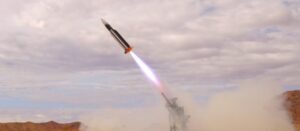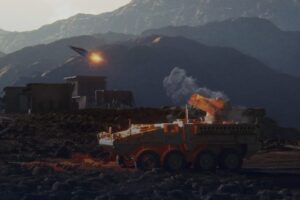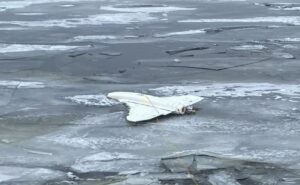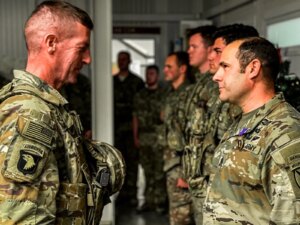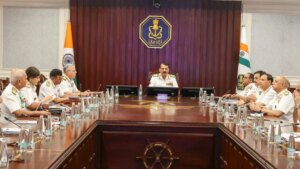俄罗斯提议印度本地生产T-14坦克,助力军队现代化
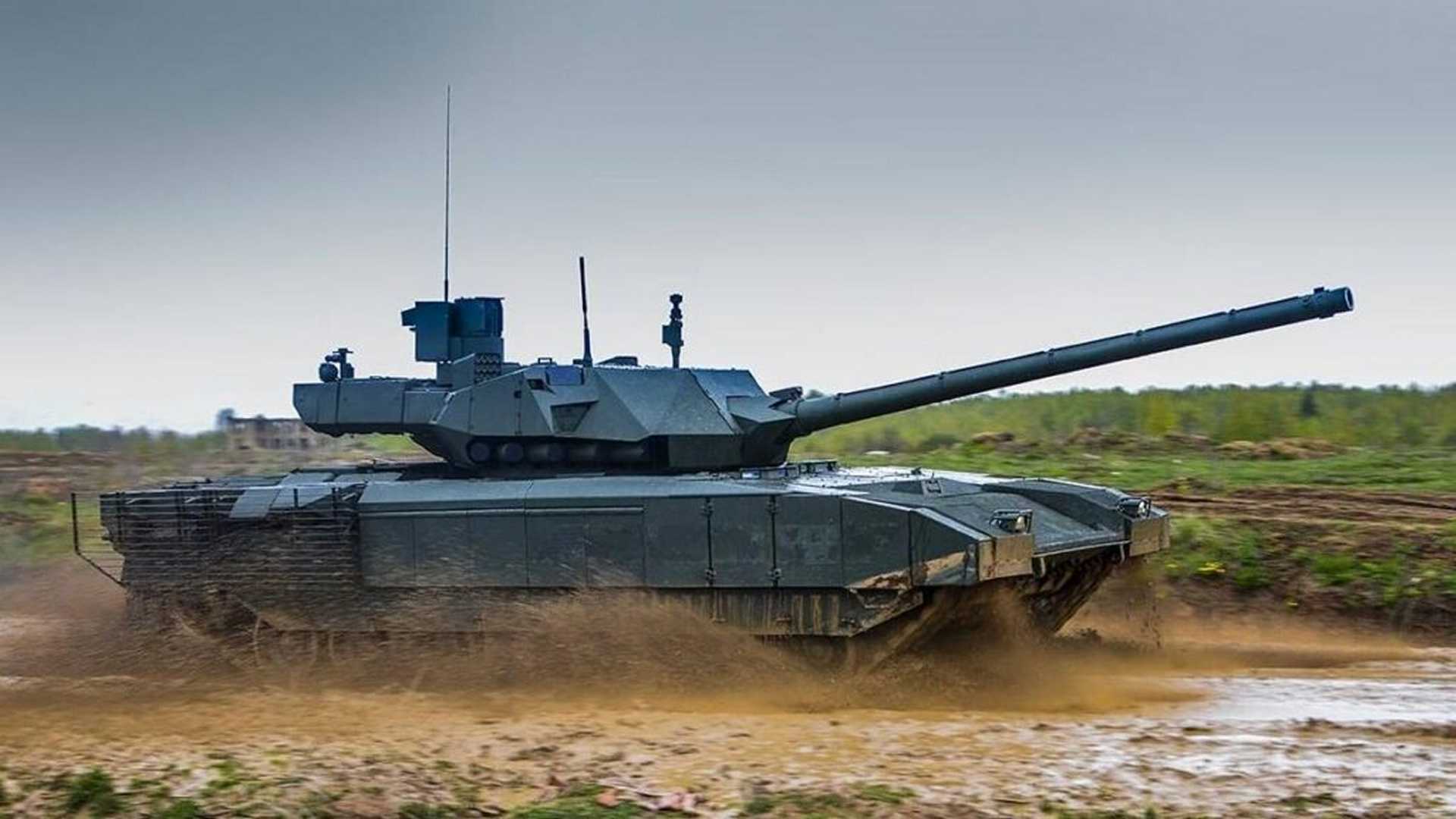
快速阅读: Russia’s state-owned company Uralvagonzavod reportedly expressed willingness to integrate Indian requirements into the T-14 design, including adaptation to Indian terrain, specific operational needs, and integration of the domestically developed DATRAN-1500HP engine in place of the standard 12N360 engine. The proposed cost of the T-14 ranges between Rs 30 and 42 crore per unit (approximately $3.43 million to 4.80 million), but local production in India could reduce this by at least Rs 10 crore ($1.14 million). Uralvagonzavod has indicated openness to collaborate with India’s Combat Vehicles Research and Development Establishment (CVRDE) or other public sector defense entities. The proposal aims to replace India’s aging T-72 Ajeya fleet and incorporates provisions for joint development and localized production beyond simple assembly or parts importation.
The
T-14 Armata
is currently Russia’s most advanced main battle tank and features a number of innovations absent in earlier Soviet or Russian models. Designed on the Armata Universal Combat Platform, the T-14 features a fully automated turret with no crew inside, while three crew members are seated in a protected armored capsule in the front hull. The tank is armed with a 125 mm 2A82-1M smoothbore gun capable of firing standard rounds and guided missiles, with claims that a future upgrade to a 152 mm cannon is feasible. The tank uses a millimeter-wave AESA radar for all-around detection, and the “Afghanit” active protection system to detect and intercept incoming anti-tank threats. It also includes Malachit reactive armor integrated into its structure. The tank has a weight of approximately 55 tonnes, an operational range of about 500 kilometers, and an estimated top speed between 75 and 80 km/h. The T-14 includes battlefield management software and electronic systems that provide situational awareness and threat engagement. It is configured to operate in extreme climates, including high-altitude environments with wide temperature ranges, and can be armed with various munitions, including anti-armor and anti-aircraft systems.
The T-14 Armata was introduced publicly in 2015 during the Moscow Victory Day parade. It followed the cancellation of the T-95 and was developed under the Object 148 designation by Uralvagonzavod. Initial Russian procurement plans aimed for 2,300 units between 2015 and 2020, but were later revised due to cost and production constraints. Reports indicate that fewer than 20 units were delivered by early 2024, mostly for trial use. The vehicle was reportedly tested in Syria and observed during training exercises in Russia, but has not been confirmed in front-line combat roles. State trials extended into the 2020s, and in March 2024, Rostec CEO Sergey Chemezov stated that the T-14 had entered limited service with the Russian Armed Forces. However, he added that due to its high cost, it would not replace the T-90, which continues to be procured in greater numbers. Some reported videos of the T-14 in Ukraine could not be verified and may have been staged or taken during non-combat testing. The current Russian inventory is composed largely of upgraded T-72, T-80, and T-90 variants, while the T-14 remains in limited use.
We might wonder whether Russia did not want to skip too many steps at once with the T-14, given the long list of problems currently known to exist. The 12N360 engine has encountered repeated reliability failures, which is one of the reasons Russia is open to replacing it with India’s DATRAN-1500HP. The vehicle’s transmission and electronics have experienced integration difficulties. Delays in meeting state trial benchmarks and in fielding operational units have undermined the platform’s credibility within Russia. While some tank prototypes have been used in non-combat exercises or displayed during parades, few have entered regular service, and no official battlefield performance evaluation has been made public. The tank’s high cost, reportedly between $5 and $7 million per unit for the Russian Army, has limited its production to pilot runs. These problems suggest that Russia’s offer to India may be partially motivated by the need to salvage the Armata program with foreign financial and technological support. If India proceeds with the co-development, it may inherit unresolved technical issues and bear the burden of completing a platform that remains in development. Past Indian experience with foreign-based systems, such as the delays in integrating Arjun components or issues with indigenized 125 mm ammunition, indicates that such joint efforts require extended timelines, consistent funding, and adaptation to local conditions.
In India, the T-14 has been under intermittent evaluation since at least 2015, including as a candidate for the Future Ready Combat Vehicle (FRCV) program. Renewed interest is based on the operational limitations of India’s Arjun and Arjun Mk.II tanks and the emergence of China’s Type 99A tank and Pakistani modernization efforts. Indian experts view the T-14 proposal as a potential opportunity to replace the large T-72 inventory with a platform designed for challenging terrains such as Ladakh and Arunachal Pradesh. Indian engineers have developed new engines and components compatible with Russian systems, and the DATRAN-1500HP engine has undergone testing to meet NATO technical requirements. India’s armored modernization has included efforts to integrate fire control systems, armor modules, and munitions from foreign partners, though several indigenized ammunition programs have failed during testing. In this context, a modified and co-produced T-14 offers a basis for increased domestic industrial participation while mitigating the risks of pursuing a fully indigenous tank design.
India and Russia maintain long-standing defense cooperation that includes production and licensed manufacturing of multiple platforms. The T-90S is manufactured in India as the T-90 Bhishma, with over 83% of its components now produced domestically, including the powerpack. Previous collaborations include the Su-30MKI, the BrahMos missile, and licensed production of AK-series rifles. Uralvagonzavod has cited the T-90 Bhishma program as a precedent for the proposed Armata localization effort. Russia has offered to exceed the T-90’s localization level by incorporating Indian subsystems and manufacturing capabilities. India’s involvement would include not only assembly but also modifications to the tank’s fire control systems, electronics, and protection components. Russia has also proposed multiple defense projects to India beyond the T-14, including joint development of the Su-57E fifth-generation fighter and local production of Amur-1650 diesel-electric submarines. Offers have also included licensed manufacturing of the Pantsir-S1 and potential collaboration on the S-500 Prometey air defense system. These are in addition to the BrahMos missile joint venture and previous proposals involving the FGFA program based on the Su-57 platform.
If India accepts the T-14 Armata proposal, the geopolitical consequences could be significant, particularly in the context of its relationship with the United States. The United States has previously warned of possible sanctions under the Countering America’s Adversaries Through Sanctions Act (CAATSA) for major defense deals with Russia. U.S. officials have emphasized that continued procurement of Russian military equipment could adversely affect U.S.-India defense cooperation, including interoperability, technology sharing, and joint development initiatives. Donald Trump had previously criticized growing Indo-Russian ties and reportedly threatened retaliatory tariffs in response to India’s sustained energy and arms trade with Russia. Washington has consistently encouraged India to diversify away from Russian platforms and align more closely with U.S. defense systems, especially in light of ongoing efforts to strengthen maritime and aerospace collaboration in the Indo-Pacific region. While the T-14 Armata is being considered within the framework of the Make in India program and could include significant Indian content, such as domestic powertrains and electronics, its origin remains a point of contention. The United States has signaled that even localized production of Russian-origin systems may not exempt India from CAATSA-related consequences, depending on the extent of Russian involvement and the strategic significance of the platform.
Russia’s state-owned company Uralvagonzavod reportedly expressed willingness to integrate Indian requirements into the T-14 design, including adaptation to Indian terrain, specific operational needs, and integration of the domestically developed DATRAN-1500HP engine in place of the standard 12N360 engine. The proposed cost of the T-14 ranges between Rs 30 and 42 crore per unit (approximately $3.43 million to 4.80 million), but local production in India could reduce this by at least Rs 10 crore ($1.14 million). Uralvagonzavod has indicated openness to collaborate with India’s Combat Vehicles Research and Development Establishment (CVRDE) or other public sector defense entities. The proposal aims to replace India’s aging T-72 Ajeya fleet and incorporates provisions for joint development and localized production beyond simple assembly or parts importation.
The
T-14 Armata
is currently Russia’s most advanced main battle tank and features a number of innovations absent in earlier Soviet or Russian models. Designed on the Armata Universal Combat Platform, the T-14 features a fully automated turret with no crew inside, while three crew members are seated in a protected armored capsule in the front hull. The tank is armed with a 125 mm 2A82-1M smoothbore gun capable of firing standard rounds and guided missiles, with claims that a future upgrade to a 152 mm cannon is feasible. The tank uses a millimeter-wave AESA radar for all-around detection, and the “Afghanit” active protection system to detect and intercept incoming anti-tank threats. It also includes Malachit reactive armor integrated into its structure. The tank has a weight of approximately 55 tonnes, an operational range of about 500 kilometers, and an estimated top speed between 75 and 80 km/h. The T-14 includes battlefield management software and electronic systems that provide situational awareness and threat engagement. It is configured to operate in extreme climates, including high-altitude environments with wide temperature ranges, and can be armed with various munitions, including anti-armor and anti-aircraft systems.
The T-14 Armata was introduced publicly in 2015 during the Moscow Victory Day parade. It followed the cancellation of the T-95 and was developed under the Object 148 designation by Uralvagonzavod. Initial Russian procurement plans aimed for 2,300 units between 2015 and 2020, but were later revised due to cost and production constraints. Reports indicate that fewer than 20 units were delivered by early 2024, mostly for trial use. The vehicle was reportedly tested in Syria and observed during training exercises in Russia, but has not been confirmed in front-line combat roles. State trials extended into the 2020s, and in March 2024, Rostec CEO Sergey Chemezov stated that the T-14 had entered limited service with the Russian Armed Forces. However, he added that due to its high cost, it would not replace the T-90, which continues to be procured in greater numbers. Some reported videos of the T-14 in Ukraine could not be verified and may have been staged or taken during non-combat testing. The current Russian inventory is composed largely of upgraded T-72, T-80, and T-90 variants, while the T-14 remains in limited use.
We might wonder whether Russia did not want to skip too many steps at once with the T-14, given the long list of problems currently known to exist. The 12N360 engine has encountered repeated reliability failures, which is one of the reasons Russia is open to replacing it with India’s DATRAN-1500HP. The vehicle’s transmission and electronics have experienced integration difficulties. Delays in meeting state trial benchmarks and in fielding operational units have undermined the platform’s credibility within Russia. While some tank prototypes have been used in non-combat exercises or displayed during parades, few have entered regular service, and no official battlefield performance evaluation has been made public. The tank’s high cost, reportedly between $5 and $7 million per unit for the Russian Army, has limited its production to pilot runs. These problems suggest that Russia’s offer to India may be partially motivated by the need to salvage the Armata program with foreign financial and technological support. If India proceeds with the co-development, it may inherit unresolved technical issues and bear the burden of completing a platform that remains in development. Past Indian experience with foreign-based systems, such as the delays in integrating Arjun components or issues with indigenized 125 mm ammunition, indicates that such joint efforts require extended timelines, consistent funding, and adaptation to local conditions.
In India, the T-14 has been under intermittent evaluation since at least 2015, including as a candidate for the Future Ready Combat Vehicle (FRCV) program. Renewed interest is based on the operational limitations of India’s Arjun and Arjun Mk.II tanks and the emergence of China’s Type 99A tank and Pakistani modernization efforts. Indian experts view the T-14 proposal as a potential opportunity to replace the large T-72 inventory with a platform designed for challenging terrains such as Ladakh and Arunachal Pradesh. Indian engineers have developed new engines and components compatible with Russian systems, and the DATRAN-1500HP engine has undergone testing to meet NATO technical requirements. India’s armored modernization has included efforts to integrate fire control systems, armor modules, and munitions from foreign partners, though several indigenized ammunition programs have failed during testing. In this context, a modified and co-produced T-14 offers a basis for increased domestic industrial participation while mitigating the risks of pursuing a fully indigenous tank design.
India and Russia maintain long-standing defense cooperation that includes production and licensed manufacturing of multiple platforms. The T-90S is manufactured in India as the T-90 Bhishma, with over 83% of its components now produced domestically, including the powerpack. Previous collaborations include the Su-30MKI, the BrahMos missile, and licensed production of AK-series rifles. Uralvagonzavod has cited the T-90 Bhishma program as a precedent for the proposed Armata localization effort. Russia has offered to exceed the T-90’s localization level by incorporating Indian subsystems and manufacturing capabilities. India’s involvement would include not only assembly but also modifications to the tank’s fire control systems, electronics, and protection components. Russia has also proposed multiple defense projects to India beyond the T-14, including joint development of the Su-57E fifth-generation fighter and local production of Amur-1650 diesel-electric submarines. Offers have also included licensed manufacturing of the Pantsir-S1 and potential collaboration on the S-500 Prometey air defense system. These are in addition to the BrahMos missile joint venture and previous proposals involving the FGFA program based on the Su-57 platform.
If India accepts the T-14 Armata proposal, the geopolitical consequences could be significant, particularly in the context of its relationship with the United States. The United States has previously warned of possible sanctions under the Countering America’s Adversaries Through Sanctions Act (CAATSA) for major defense deals with Russia. U.S. officials have emphasized that continued procurement of Russian military equipment could adversely affect U.S.-India defense cooperation, including interoperability, technology sharing, and joint development initiatives. Donald Trump had previously criticized growing Indo-Russian ties and reportedly threatened retaliatory tariffs in response to India’s sustained energy and arms trade with Russia. Washington has consistently encouraged India to diversify away from Russian platforms and align more closely with U.S. defense systems, especially in light of ongoing efforts to strengthen maritime and aerospace collaboration in the Indo-Pacific region. While the T-14 Armata is being considered within the framework of the Make in India program and could include significant Indian content, such as domestic powertrains and electronics, its origin remains a point of contention. The United States has signaled that even localized production of Russian-origin systems may not exempt India from CAATSA-related consequences, depending on the extent of Russian involvement and the strategic significance of the platform.
(以上内容均由Ai生成)
